Le Havre - light, air and space on the English Channel
Le Havre -
Light, air and space on the English Channel
The French city of Le Havre is located directly at the mouth of the Seine on the English Channel. With 164,000 inhabitants, Le Havre is the largest city in Normandy and home to the second largest port in France after Marseille.
Construction of the city began in 1517 on the orders of French King François I in order to protect the Seine estuary militarily, especially from the English fleet.
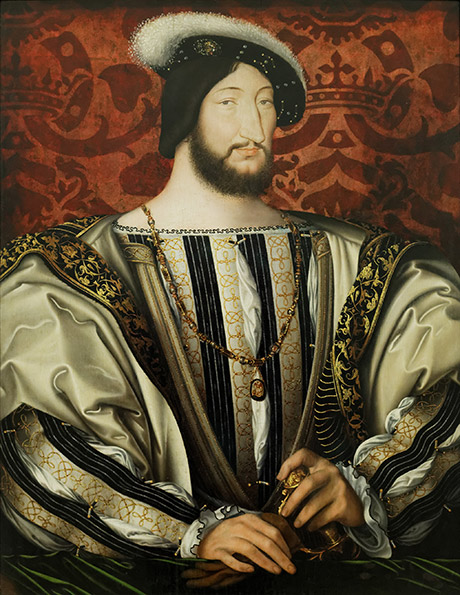
On October 8, 1517, François I signed the founding charter of the port, whose plans were initially attributed to Vice-Admiral Guyon Le Roy du Chillou.
Finally, in October 1518, the first ship sailed into the port of Le Havre. The king himself then traveled to the new city in 1520, granted her the royal privileges in perpetuity and gave her his own coat of arms, which consisted of a salamander.
As the home port of a growing fishing fleet, the construction of a shipyard and the growing overseas trade, the city quickly gained in importance and by the 18th century Le Havre was already a prosperous city and home to the second largest port after Nantes on the Loire.
During the First World War, the port, which was safe due to its distance from the front, was an important hub for supplies transported across the English Channel for the forces allied with France.
During the Second World War, the Wehrmacht occupied the city in 1940 after the capitulation of France and developed the port and the adjacent coast into a fortress as part of the Atlantic Wall. After the successful Allied invasion (D-Day) on the southern beaches of Normandy in June 1944, Le Havre was liberated by the Allied forces on September 11, 1944.
This was preceded by days of heavy air strikes, which caused immense damage to the city and cost thousands of residents their lives.
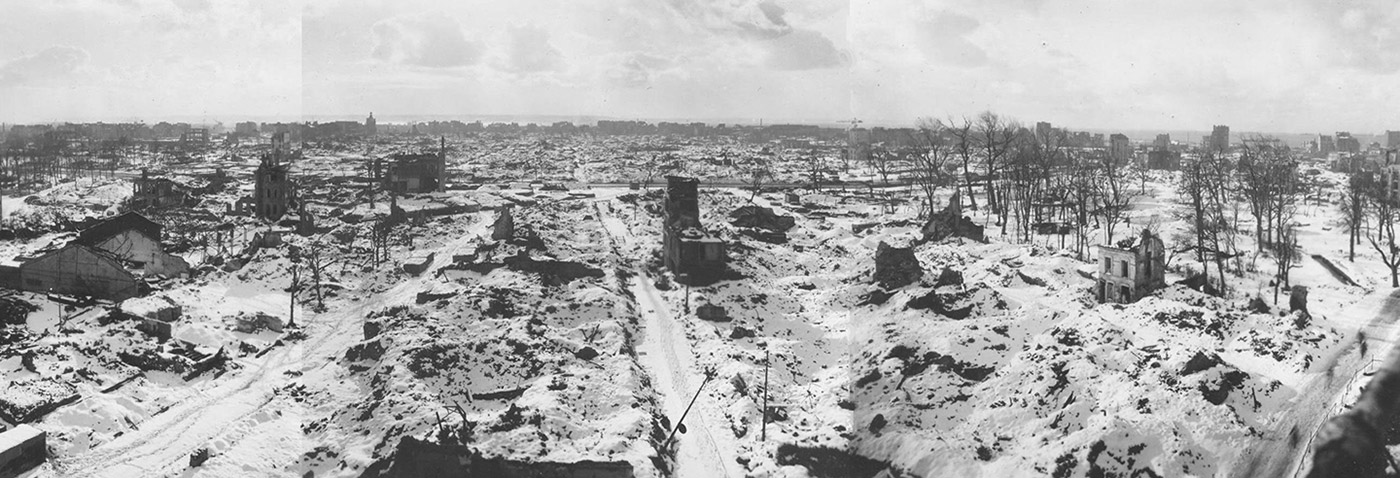
The reconstruction of the almost completely destroyed city then took place between 1945 and 1954. A team led by the French architect Auguste Perret developed a methodically self-contained reconstruction plan, which provided for the use of prefabricated elements and the systematic use of a modular grid and was realized through the innovative use of concrete.
The rebuilt city center with its characteristic concrete architecture was then added to the UNESCO World Heritage List in July 2005.
The Saint-Joseph church
The Saint-Joseph church was the most ambitious building project in architect Perret's reconstruction plan and is still the undisputed symbol of the rebirth of Le Havre after the almost complete destruction of the city in the Second World War.

The foundation stone was laid on October 21, 1951 and, in addition to its ecclesiastical function, Perret wanted this new church to be a memorial and a 110m-high "lighthouse" commemorating the horrors of the destruction. become.
With this in mind, Auguste Perret commissioned the glass painter Marguerite Huré to design the colored glass surfaces on the sides of the tower. Her work creates more than 50 different shades of green, red, purple, yellow, orange and white, depending on the incidence of light inside the tower, which always put the visitor in a different mood.
After Perret's death in February 1954, Le Havre architect Raymond Audigier completed the church according to his plans. The church was opened in June 1957 and was added to the list of French historical monuments in 1965.
The town hall of the city
The city's listed town hall is located in the center of the city on the North side of the Place de l'Hôtel de ville.
Originally, a building erected in 1859 stood here. For the reconstruction after the destruction of the Second World War, the architect Auguste Perret drew up a plan in 1949 for a building that would correspond to the modern architecture of the neighboring residential buildings that had already been built in 1948. After Perret's death in 1954, Jacques Tournant continued the project.

The building faced west-east with a tower on the west side.
The town hall façade is characterized by 16 pillars in front of the lower floor and 13-metre high, tapering columns in front of the upper floor. There are tall rectangular windows between the pillars. The central building has a length of 92 meters.
The town hall was finally inaugurated on July 14, 1958.

The volcano - the house of culture
This building, actually a double volcano, was designed by Oscar Niemeyer (1907-2012), a Brazilian architect and a key figure in modern architecture. Famous for his designs in the Brazilian capital Brasilia, he built this building for Le Havre in 1972-1982 for the city's cultural center, which was quickly nicknamed Le Volcan.
It is located in the city center of Le Havre on Place Oscar Niemeyer.
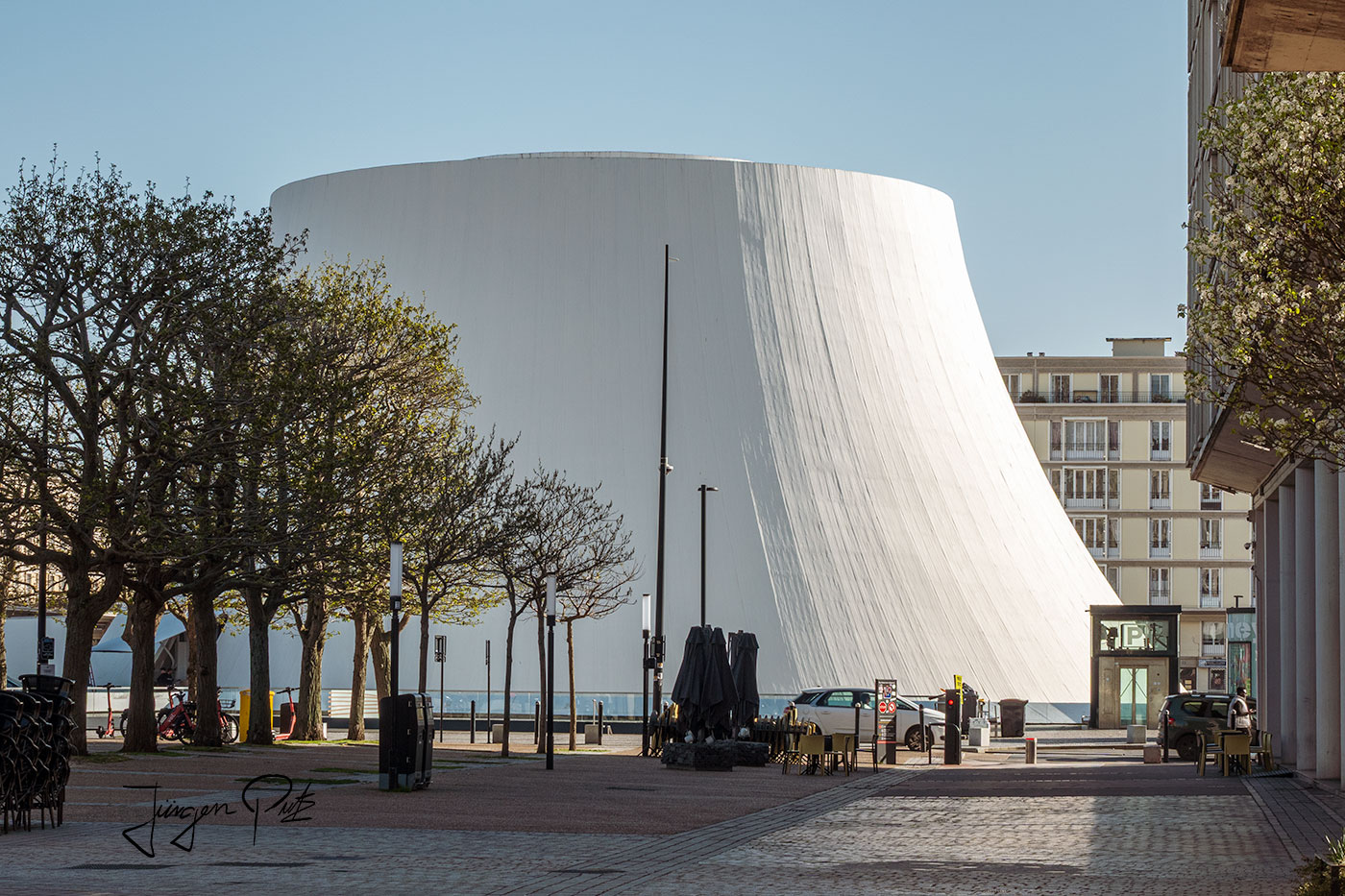
The building consists of two parts, the large and the small volcano, which appear to be separate but are connected by basement levels.
The small volcano (Petit Volcan) in Le Havre was designed by Brazilian architect Oscar Niemeyer and built between 1972 and 1982. The building is part of the Le Volcan cultural center, which consists of two characteristic structures: the large and the small volcano.
As a contrast to the surrounding houses designed by Auguste Perret, Niemeyer designed the two parts of the building with rounded shapes. From a bird's eye view, you can see that the curved shapes and ramps of the complex are designed to form the outline of a dove, a symbol of peace.
The central part of the building is designed in the shape of a truncated cone that tapers upwards and is therefore called the great volcano. It is home to the Scène nationale du Havre, a renowned theater and cultural center with a theater hall for around 1,200 spectators and a cinema hall with 350 seats.
The small volcano has been home to the city's media library, the Oscar Niemeyer Library, since 2015.
Bassin du Commerce Le Havre
The Bassin du Commerce is a historic and urban harbour basin in the center of Le Havre and a symbol of the city's maritime identity. It is around 500 meters long and 99 meters wide and connects the city center with the Île Saint-François district, with access to the open sea via a lock.
Construction of the basin began in 1792 and was completed in 1820. It once served as an important transshipment point for ships and goods, but was also used for cultural and social events, such as the International Maritime Exhibition in 1887.

Today, you can cross the basin via a modern footbridge designed by Guillaume Gillet (1969). This is a popular place to relax and take a walk in the city.

At the end of the basin stands the Monument aux morts (Monument in Honor of the Fallen Soldiers of the First World War) by Pierre-Marie Poisson (1924), which survived the bombing of the Second World War unscathed.
The Notre Dame Cathedral
Notre Dame Cathedral is the Catholic episcopal church of the diocese of Le Havre. It is one of the few remaining pre-war buildings in the city center.
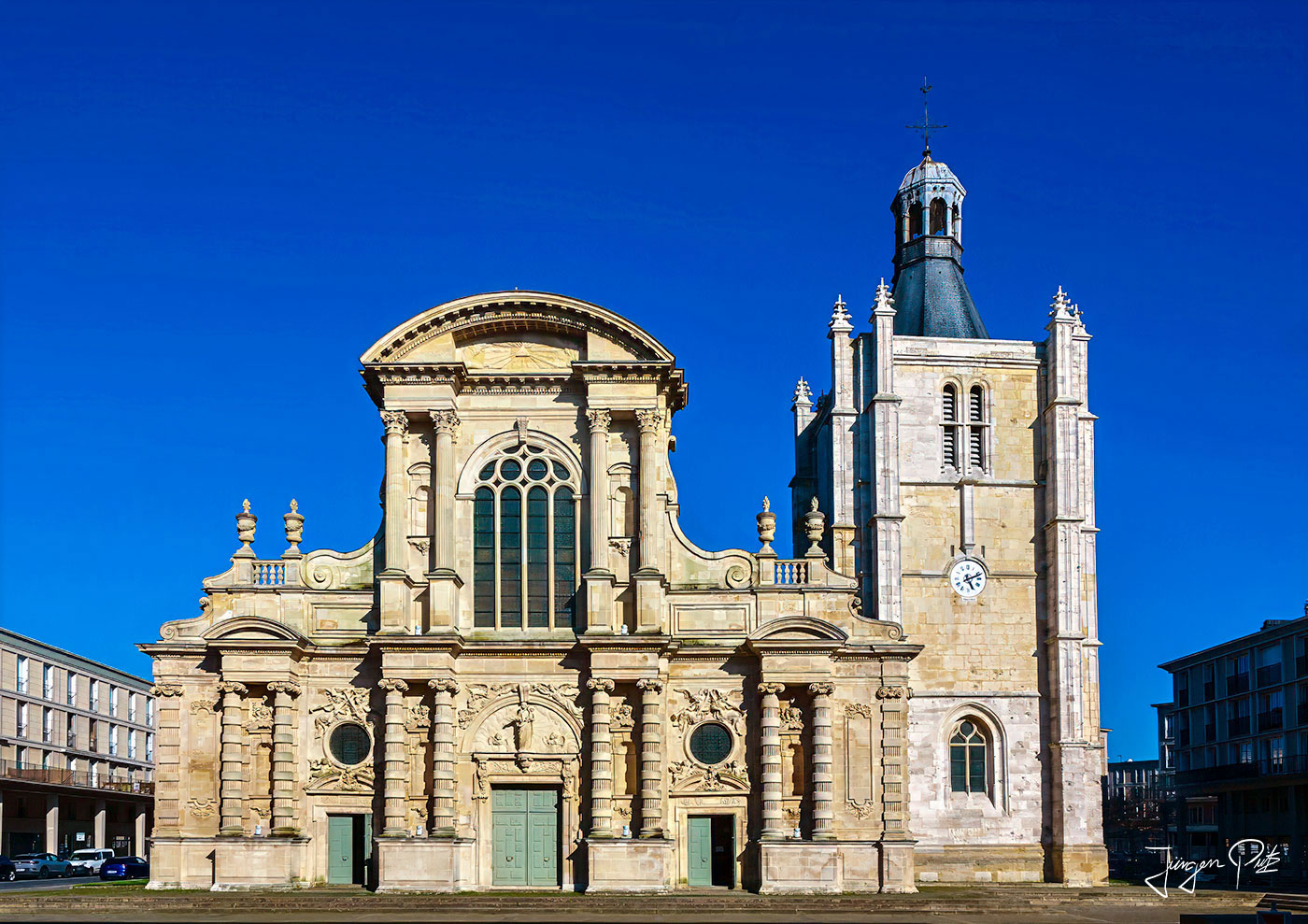
The construction of the current church was decided in 1575 and led by master mason Nicolas Duchemin. The choir was completed 10 years later and the nave in 1597, although the vault of the church was missing.
King Henry IV finally granted an annual subsidy to complete the work and the church was finished in 1630. The Renaissance and Baroque forms bear witness to the change in architectural style during the construction period.
During the French Revolution, the church was rededicated as a temple of reason and freedom. It then served as a feed store.
From 1801, the church was once again used for worship and, in particular the west façade, was renovated until 1830.
The church was badly damaged by bombing during the Second World War. Most of the windows were destroyed as early as August 1941. The bombings in June 1944 and, above all, the devastating bombing of the city on September 5 and 6, 1944, completely destroyed five arches of the nave.
Reconstruction was completed in 1974, but in 1994 the southern aisle was in danger of collapsing due to the marshy subsoil. The subsequent renovation work lasted from 2001 to 2004.
In 1974, Pope Paul VI also founded the diocese of Le Havre. The church of Notre Dame was therefore elevated to cathedral status on December 7, 1974.
One été au Havre
In 2017, the art festival "Un été au Havre" was organized for the first time on the occasion of the 500th anniversary of Le Havre.
In 2022, over 1.3 million people visited this art festival in La Havre, where works of art can be seen at various locations in the city from the end of June to mid-September. Some of these works then remain permanently at the request of the citizens in the city.
Each year, ephemeral monumental works are produced for the event, which runs from the end of June to mid-September and is intended for specific locations in the city. At the request of the citizens of Le Havre, some works become permanent additions to the city's collections.
Porte Océane / the beach 2017 UP-3
The artist duo Sabina Lang and Daniel Baumann are known for their creations, which operate at the interface between sculpture, design, street furniture and architecture. They are explicitly designed for the environment in which they are placed.
For the 2017 event, the artists created a large-format sculpture made of several interlocking rectangles at the Le Havre stand, which was replaced in 2018 by a new, identically shaped version made of white concrete.
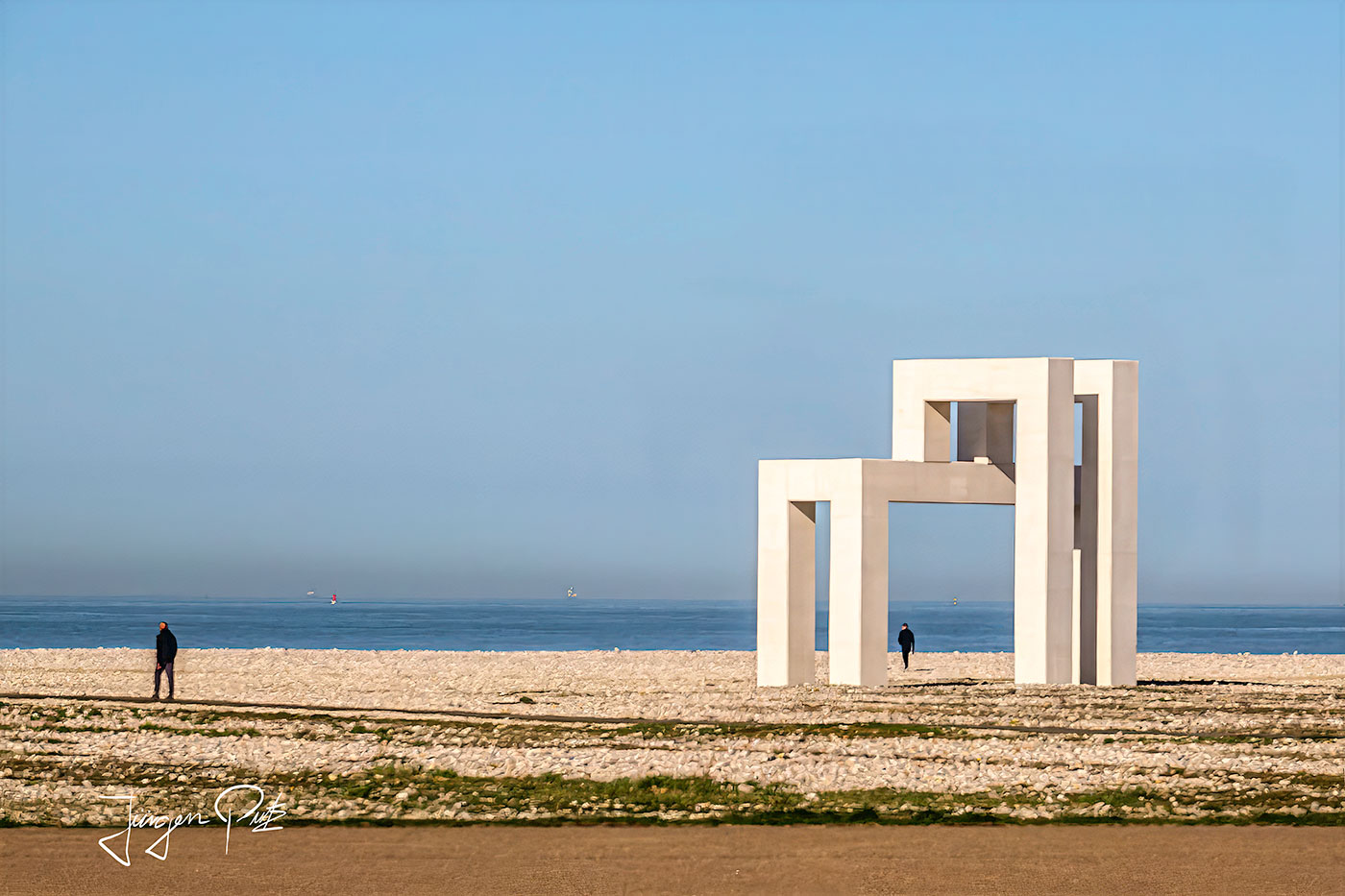
As a continuation of the main Avenue Foch axis, this structure forms a second gateway to the sea, which is based on the symmetry of the Porte Océane building complex. Firmly anchored in the gravel at low tide, the waves wash around the base at high tide, making the sculpture look like an entrance leading into the sea.
Stephan Balkenhol
Stephan Balkenhol discovered the modern architecture of the reconstruction of Le Havre as part of the art festival in 2019.
The prefabricated regular elements used during the reconstruction sometimes contain window frames that remained closed from the outset.

These uninhabited rooms inspired Stephan Balkenhol to imagine people who could live in them. He placed these imaginary inhabitants as figures in the closed window frames.
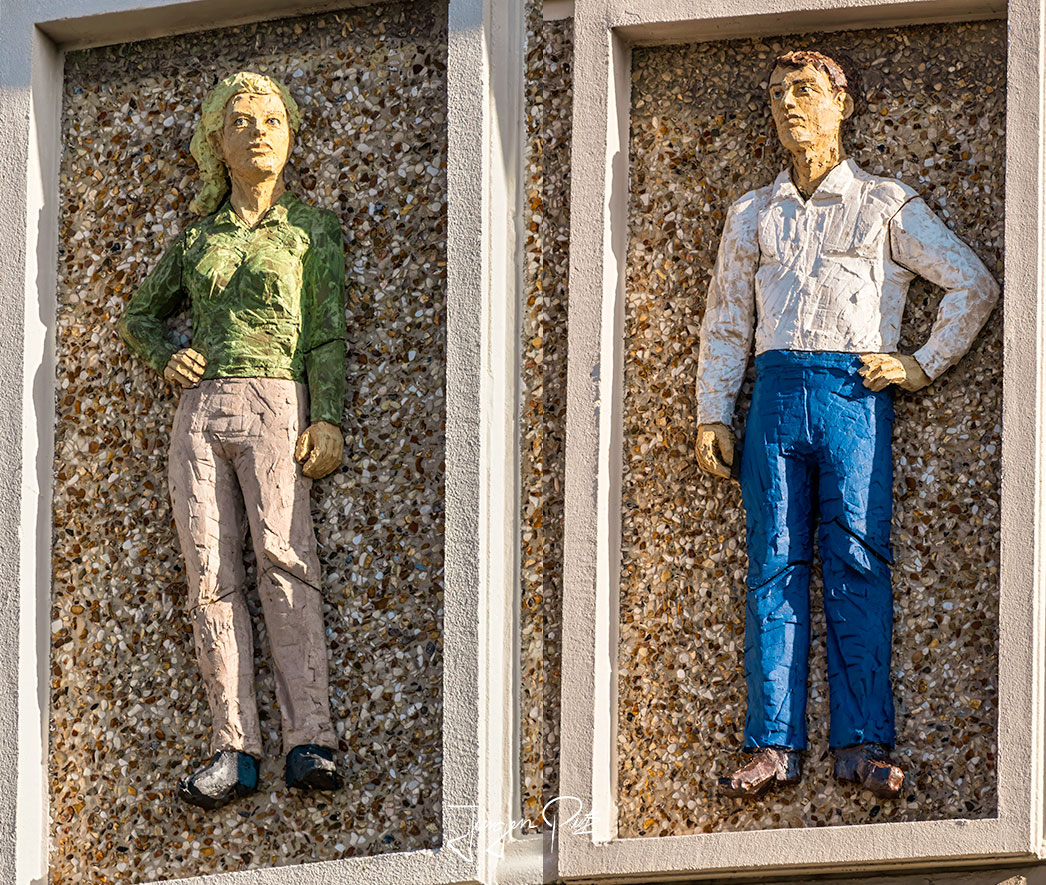

Stephan Balkenhol created a new piece for the Festival of the Year 2020: Monsieur Goéland. This man with the head of a seagull wears a pea jacket, the emblematic clothing of people at sea: sailors, fishermen and pirates.
On the esplanade of the museum in Le Havre, Monsieur Goéland stands on a pole 3.20 meters high like a mast and its yardarm, as if he were looking for the sea around him.
Le Havre - Catène de containers
After graduating from the Beaux-arts de Paris, the artist Vincent Ganivet became known for his works of art made of bricks and concrete blocks, which he created from massive and often complex arches and structures.
The Catène de Containers is a sculpture by the artist Vincent Ganivet from 2017.
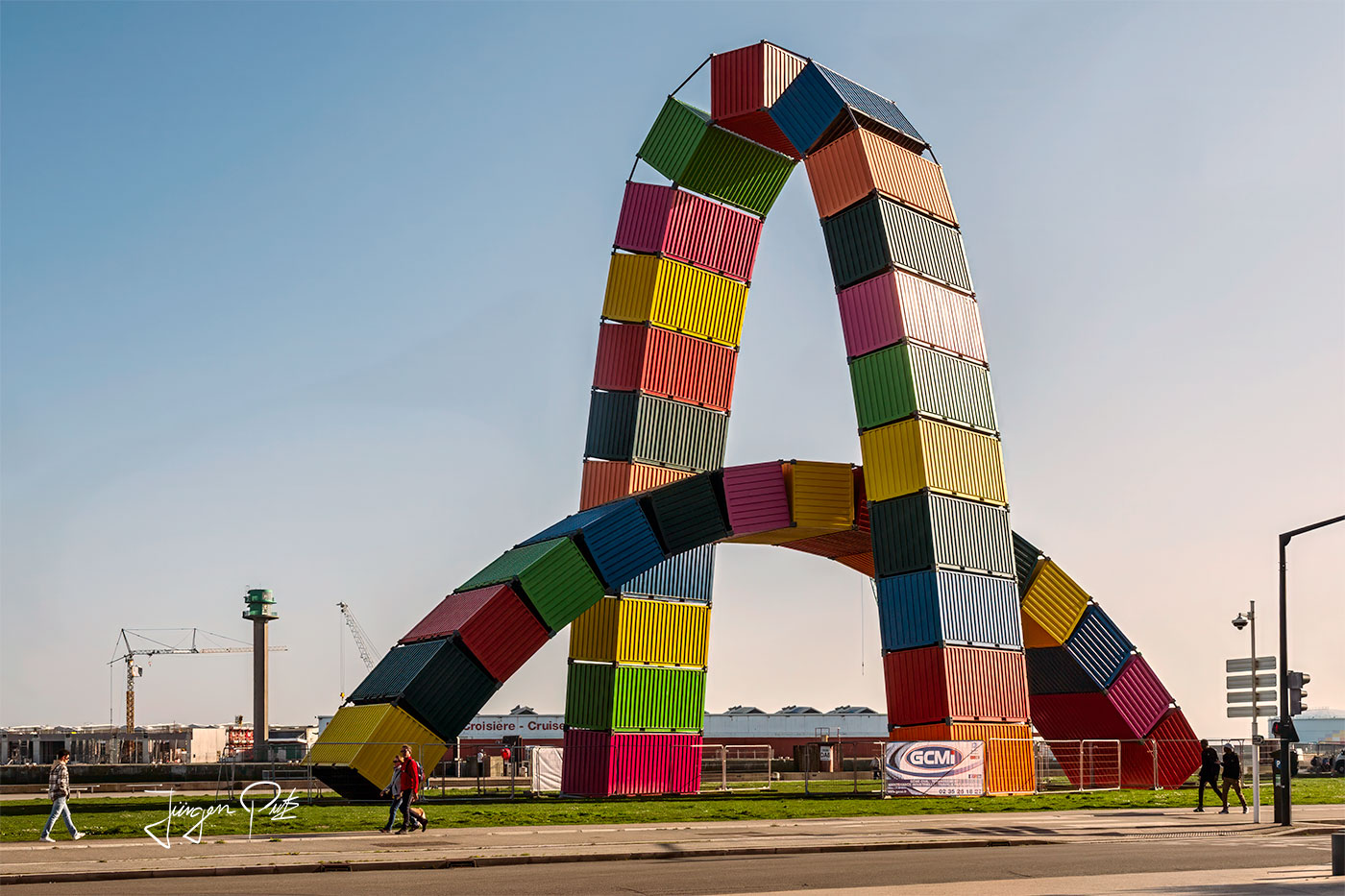
For the construction of the Catène de Containers monument, Ganivet made two arches out of containers to commemorate the 500th anniversary of the French city of Le Havre on the occasion of the "Une été au Havre" art festival. The containers, stacked up to 30 meters high, are easily recognizable thanks to their different bright colors and are located on Rue de Paris in the production port of Le Havre.
The stacks of containers were designed to look like a LEGO set, as the monument was built from containers. These containers were stacked together using a special engineering tactic so that no glue or other adhesives were used during assembly. For this particular project, Ganivet raised its containers and adapted their size to the neighboring buildings.
Le Havre and Impressionism
Le Havre is considered the cradle of Impressionism. On an early November morning in 1872, Claude Monet painted the iconic work "Impression, Sunrise" from a window of the Hôtel de l'Amirauté.
Instead of the hitherto realistic painting, which depicted reality, Impressionism's form of expression was now the depiction of light and the atmosphere of the scenery of painting.
The extraordinary light of the city at the mouth of the Seine and the coastal landscape, the wonderful sunsets and the constantly changing, extraordinary light conditions of the sky inspired artists such as Jongkind, Pissarro, Sisley, Signac, Caillebotte and Courbet to create numerous Impressionist masterpieces here.
The beach promenade - the path of the Impressionists
You can follow in the footsteps of the Impressionists along the beach promenade in Le Havre.

Signs have been erected in places where some of the famous works were painted, taking visitors back to the time when this modern art was created in Le Havre.
The Musée d'Art Moderne André Malraux
Just a few steps away from here is the Musée d'Art Moderne André Malraux (MUMA). This light-flooded building houses France's second largest collection of Impressionist works after Paris, with works by Boudin, Monet, Renoir, Pissarro, Degas and Sisley. Visitors can also view works of Fauvism, an art movement that developed at the beginning of the 20th century.
And Le Havre offers much more:
The large skate park right by the sea!
The Jardins suspendus (Hanging Gardens) with an incredible view of the Seine Bay, the sea and the harbor.
Les Bains des Docks: Built as early as 1840 on the model of the London docks!
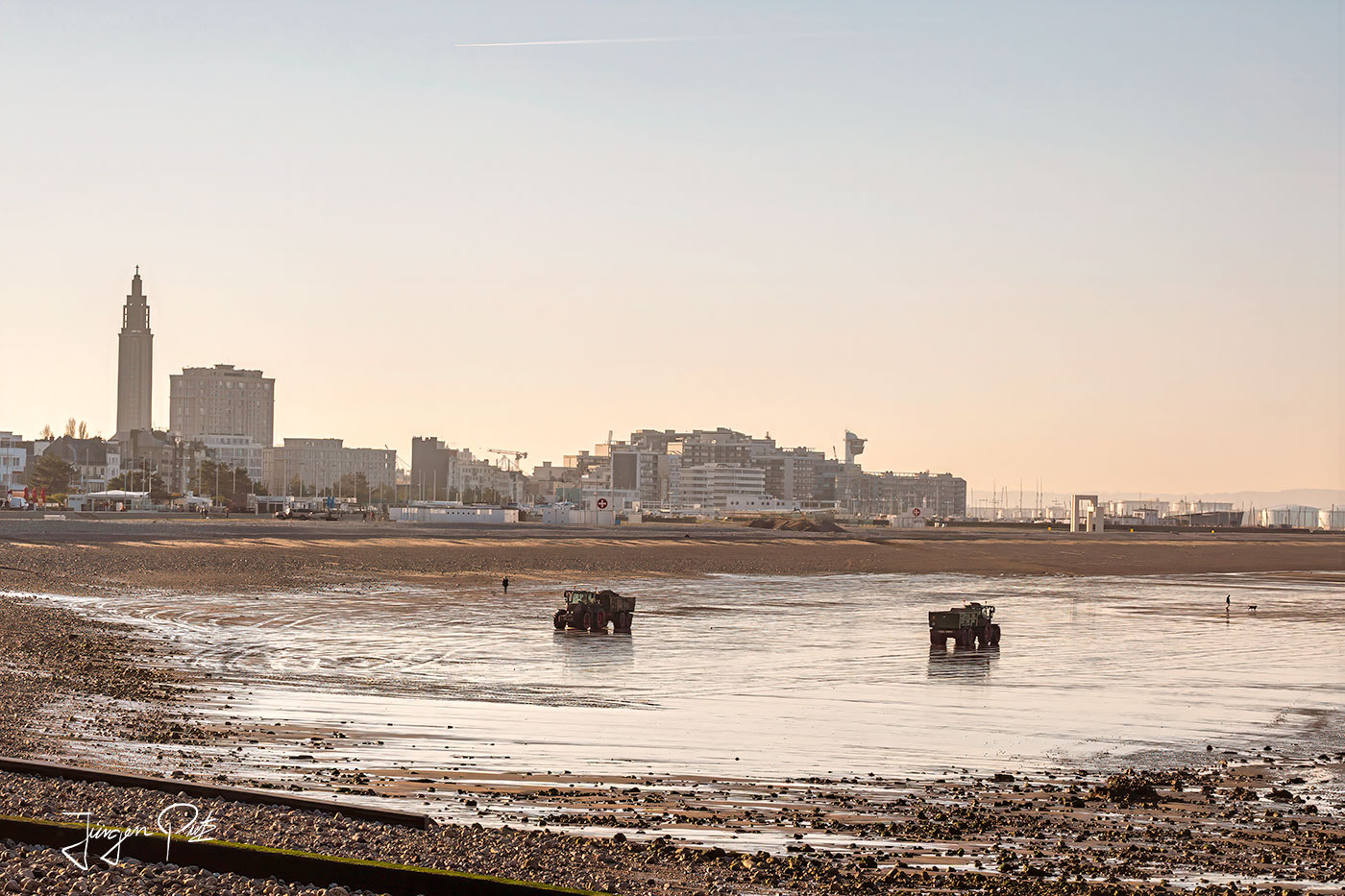
And so Le Havre was a wonderful starting point for our hike along the Alabaster Trail to Dieppe and Le Tréport!
Information:
2 Comments
Leave a comment Antworten abbrechen

Jules Verne found a poetic paraphrase for the question "What are you burning for?"
"He would insist on going; nothing in the world could stop him. His imagination is a volcano..."
Oscar's volcano is suddenly visible after sending the first comment.
Beautiful memory.
Le Havre - the starting point for Jules VERNE's journey around the world in 80 days
Oscar's volcano is missing at the top of the view.
The most beautiful picture - the church of Saint Joseph. The church looks like a skyscraper.
Jules Verne:
"It makes sense to travel if you want to see new things"
"Everything a person can imagine, other people will realize."